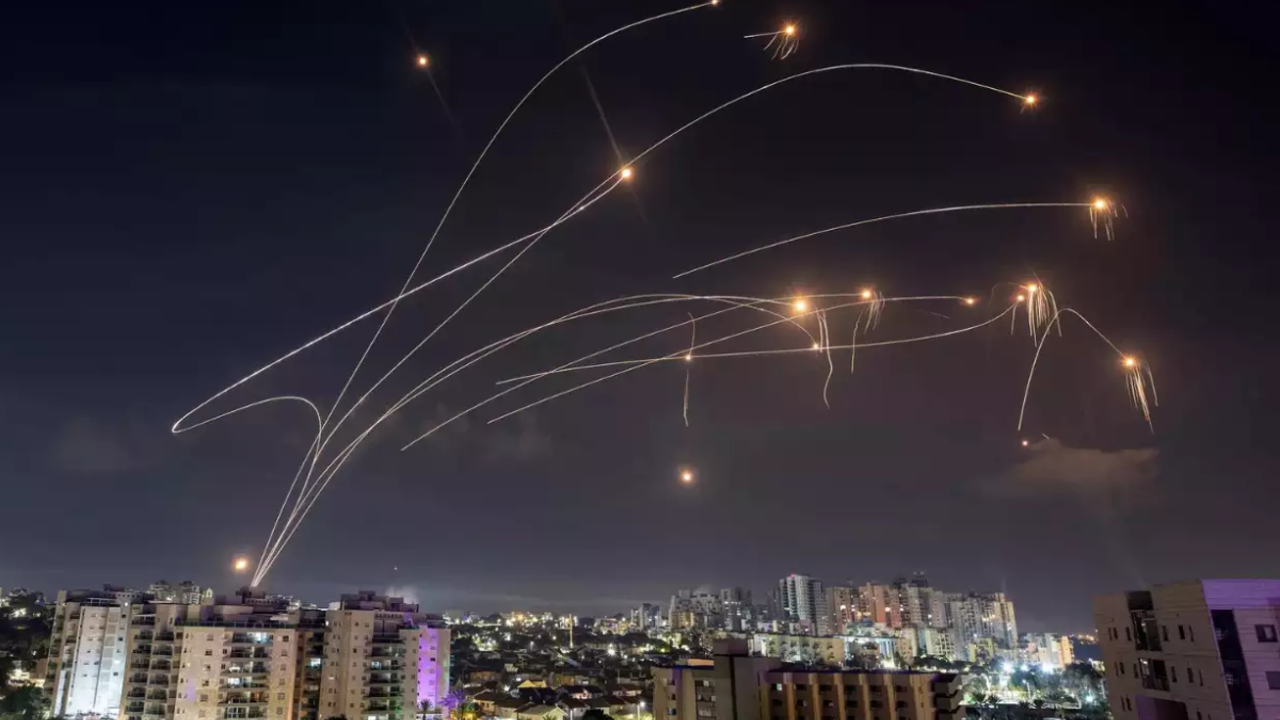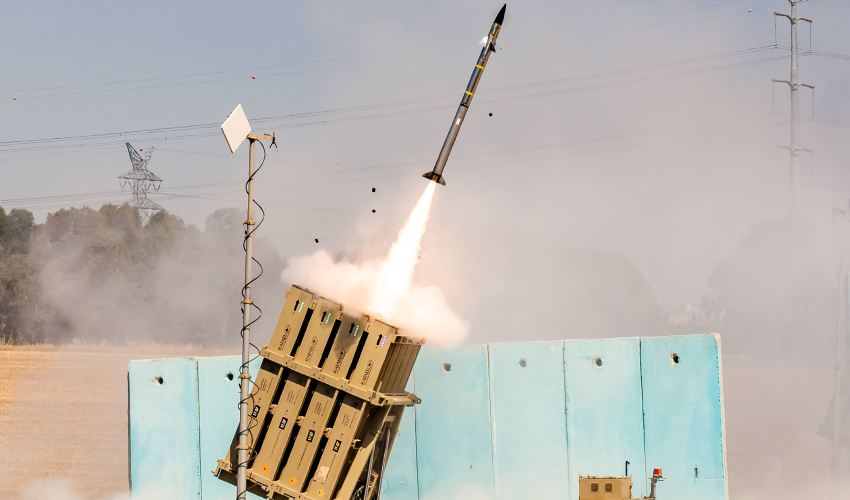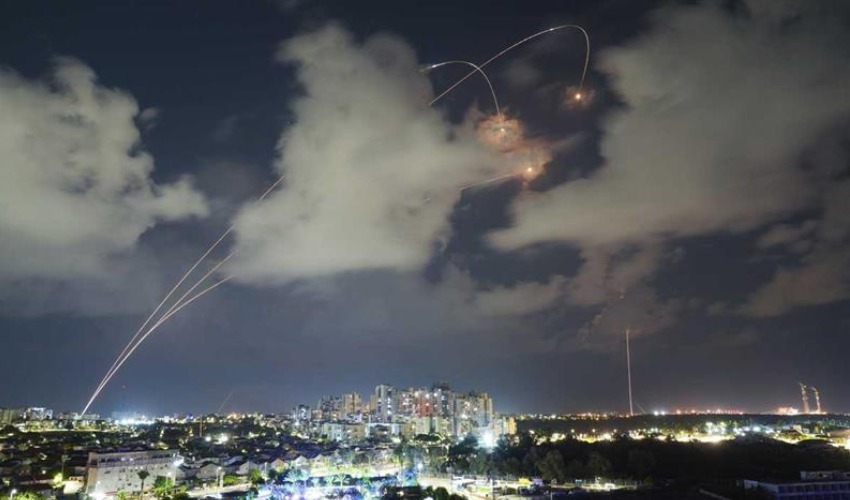Growing defense but challenges remain: Israel's Iron Dome
Since its deployment in 2011, Israel's rocket defense system, the Iron Dome, has intercepted thousands of rockets launched from the Gaza Strip but nowadays Iron Dome's capacity to intercept missiles or rockets has increased over time, but it still struggles to withstand intense attacks.

Since its deployment in 2011, Israel's rocket defense system, the Iron Dome, has intercepted thousands of rockets launched from the Gaza Strip but nowadays Iron Dome's capacity to intercept missiles or rockets has increased over time, but it still struggles to withstand intense attacks.
The Iron Dome shield may become inadequate, especially if the system is saturated with simultaneous serial missile or rocket fire from different areas. In addition, as the attackers expand their inventory of weapons and ammunition, it becomes difficult to work effectively to detect and destroy ammunition targeting Israel.
In just two weeks, Hamas has fired 7 thousands rockets toward Israel, according to the Israeli military. That is more than any of the previous four wars fought between Israel and Hamas since the militant group seized power in Gaza in 2007.
Iron Dome, which is also effective against platforms and ammunition such as aircraft, helicopters, unmanned aerial vehicles (UAVs), cruise missiles, and precision guided missiles, consists of three components: detection and tracking radar, combat management and weapon control system, and missile firing unit.
Each of the battery systems of the Iron Dome has the capacity to launch 20 missiles, while the total missile launch capacity is 600-800. Although the cost of using this system, which can observe 1100 targets in the air with its radar system, is high, Iron Dome stands out with its ability to prevent many threats at the same time.

Iron Dome has the advantage of being able to track the approaching rocket very precisely, select which rockets to fire, counter missile launches, and prevent civilian casualties.
In addition, Iron Dome, which is not programmed to intercept all of the rockets fired at Israel, calculates whether the munitions fired will fall to a position that will not cause any loss of life and property, and selects its targets accordingly, and therefore has a high success rate.
IRON DOME WORKING SYSTEM
Once the radar detects a rocket, the system determines whether the rocket is headed toward a populated area.
If so, it launches a missile to intercept and destroy the rocket. If the system determines the rocket is headed to an open area or into the sea, it is allowed to land, thus conserving missiles. According to the military, all interceptions occur in Israeli airspace.

The military declined to comment on how many Iron Dome batteries are currently deployed. But as of 2021, Israel had 10 batteries scattered around the country, each able to defend a territory of 60 square miles (155 square kilometers), according to Raytheon.
Also, the Patriot works in a similar way to the Iron Dome but is meant primarily to intercept aircraft, cruise missiles, and ballistic missiles rather than short-range weapons.
COST OF IRON DOME
Each missile costs an estimated 40 thousand dollars to 50 thousand dollars, according to the Institute for National Security Studies, a Tel Aviv think tank.
The United States(US) has invested heavily in the system, helping with development costs and replenishing it during times of fighting.
US President Joe Biden has said he will ask Congress for 14.3 billion dollars in military aid for Israel. The majority of that would help with air and missile defense systems, according to the White House.
“We’re surging additional military assistance, including ammunition and interceptors to replenish Iron Dome,” Biden said.
WHAT HAPPENED
Hamas' military wing, the Izz al-Din al-Qassam Brigades, announced that they launched a comprehensive attack against Israel called "Al-Aqsa Flood" on the morning of October 7.
While thousands of rockets were fired from Gaza towards Israel, armed groups entered the settlements in the region. The Israeli army also launched an attack on the Gaza Strip with dozens of warplanes.
The Palestinian Ministry of Health in Gaza announced that Israel killed over 8 thousand people, including 3 thousand 342 children, 2 thousand women, and 397 elderly people, and injured 20 thousand 242 people in its attacks on Gaza.
It was reported that 1400 Israelis, including 306 soldiers, were killed and 5 thousand 132 Israelis were wounded in the attacks from Gaza.
The Israeli army hit Damascus and Aleppo airports. As the Middle East is once again turning into a bloodbath, a deadline has been set for nearly 2 and a half million Palestinians to leave the blockaded Gaza.
In the occupied West Bank, 106 Palestinians were killed in attacks by Israeli forces and Jewish settlers.
In Israel's attacks on Gaza, 35 journalists were killed.
In the clashes between the Israeli army and Hezbollah on the Israel-Lebanon border since October 8, 46 Hezbollah members and 4 civilians, one of whom was a journalist, were killed. Three Israeli soldiers and one Israeli civilian were killed in the attacks organized by Lebanon.
Most recently, Israel attacked the al-Ahli Baptist Hospital in Gaza, killing civilians.
Source: AP & Voice of America & Anadolu Agency & Newsroom










